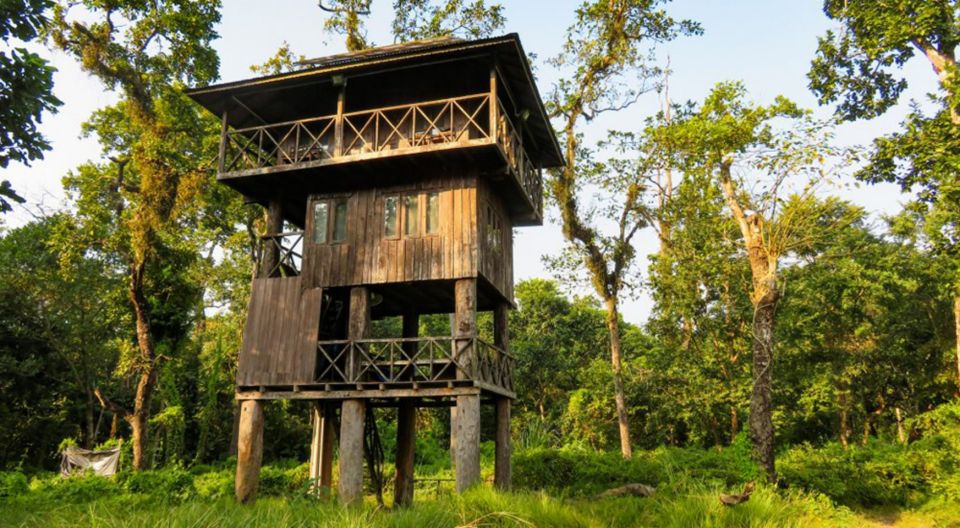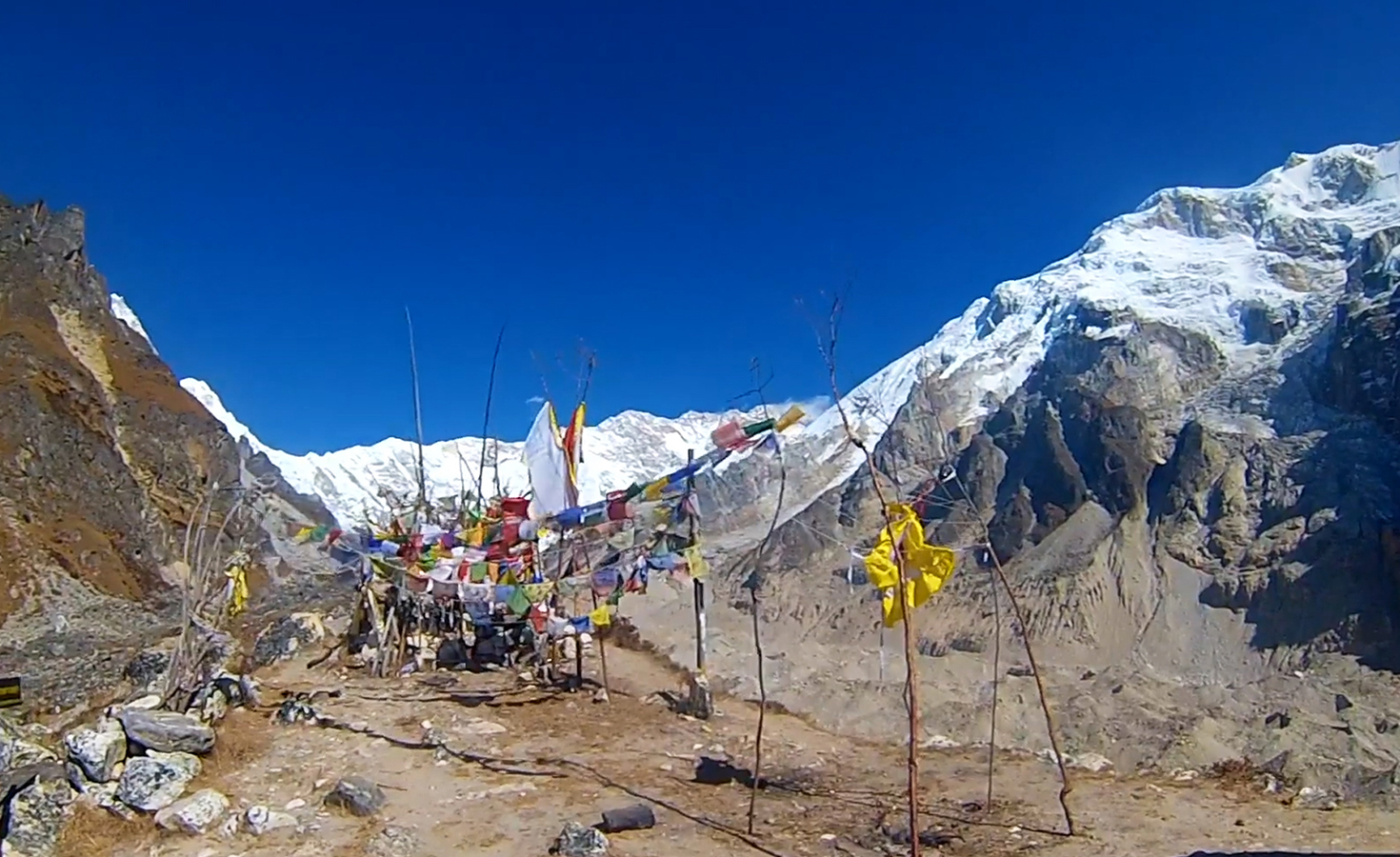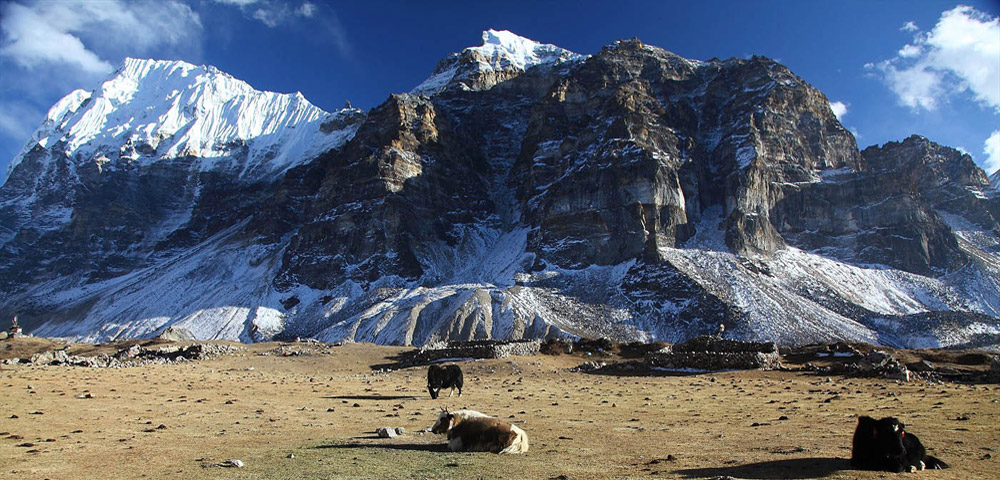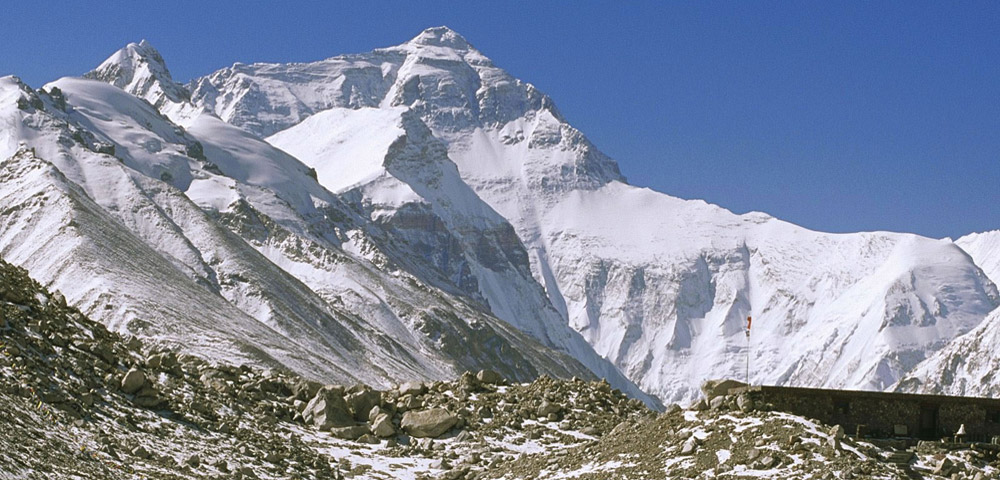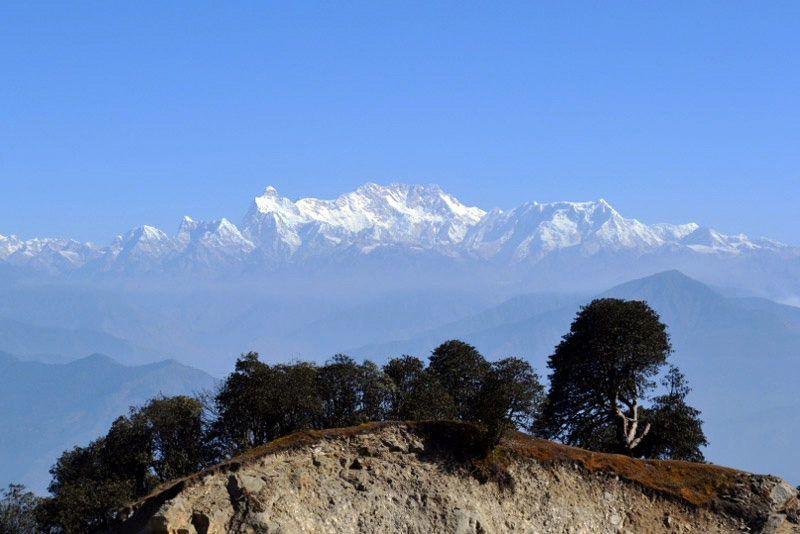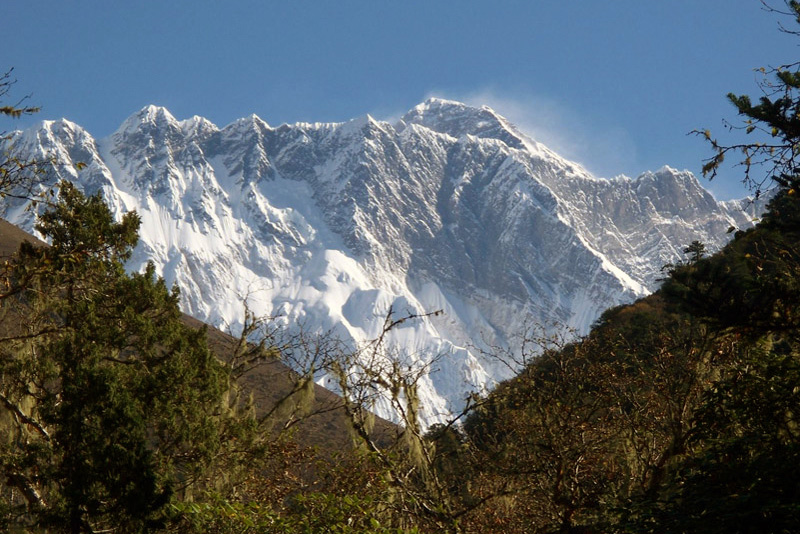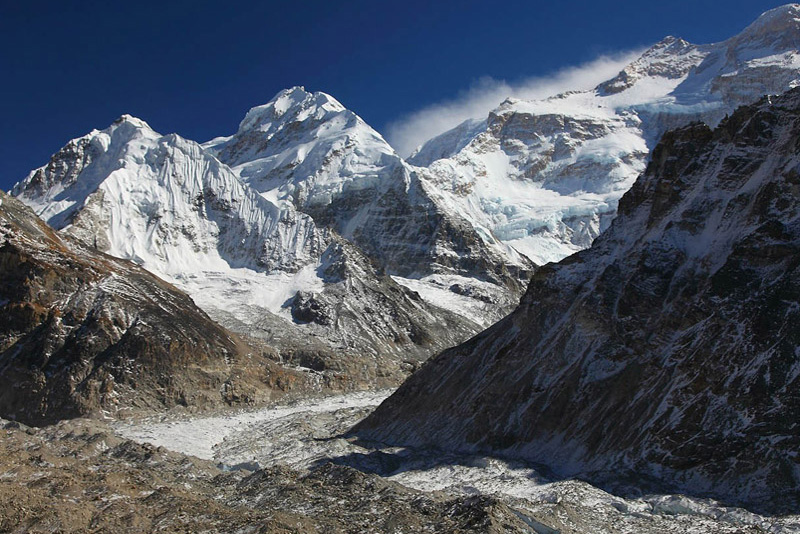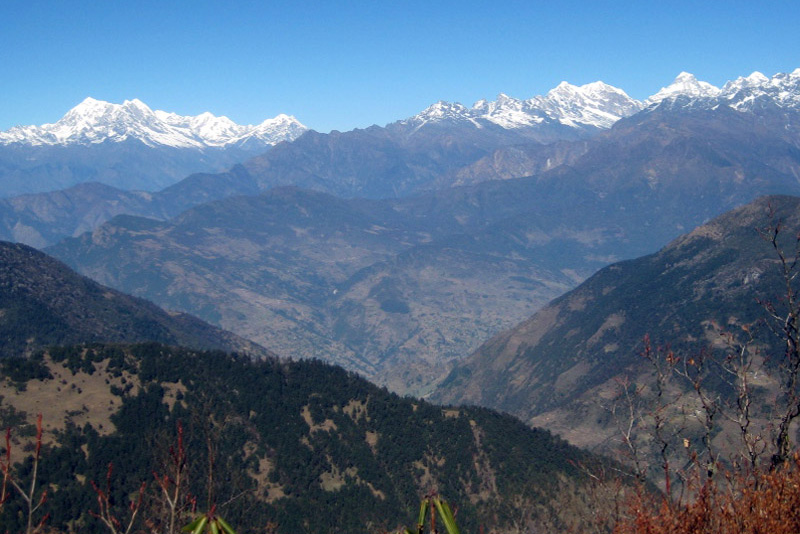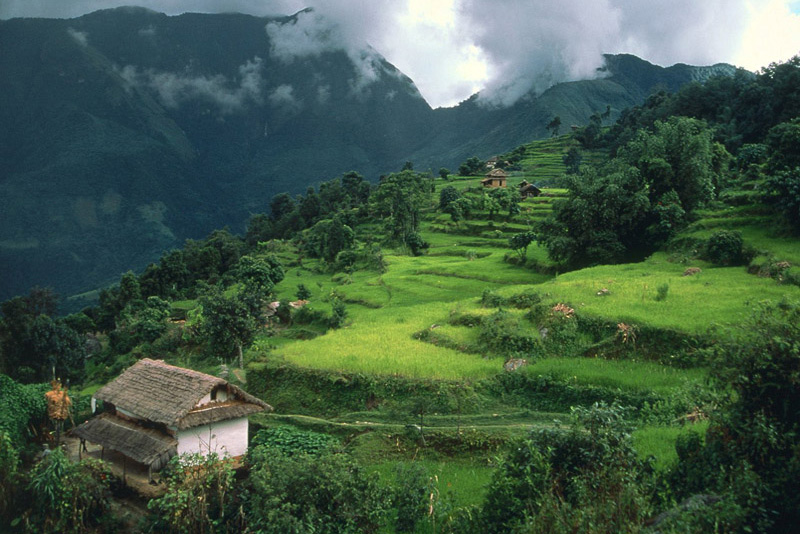Kanchanjunga Base Camp Trek
The Kanchenjunga Base Camp Trek is an incredible journey that takes you to the remote and less-traveled regions of eastern Nepal, offering a unique blend of natural beauty, cultural exploration, and high-altitude adventure.
h base camp treks in a single expedition, however it is more commonly referred to as Kanchenjunga Circuit Trek or Kanchenjunga Trek, and not Kanchenjunga Base Camp Trek. Kanchenjunga trek is a 27-day adventure, and it is without a doubt one of the most adventurous journeys in Nepal, with so much to discover.
Prior to beginning the Kanchenjunga Base Camp Trek, you must choose between Kanchenjunga North Base Camp and Kanchenjunga South Base Camp as the base camp to explore. There are several natural and cultural sites to discover on both base camp walks, making them equally intriguing. When you embark on the 27-day trek, you will see both the base camps and the key sites in the Kanchenjunga region, such as Ramche, Ghunsa, Tseram, etc. The trip begins in Suketar and concludes in Thorpu. They are beautiful towns. All the locations you visit during your journey are naturally endowed. They are situated in the foothills.
The north and south base camps of Kanchenjunga Mountain are, without a doubt, the most notable aspect of the Kanchenjunga Base Camp journey. To address the topic of where Kanchenjunga Peak is located, it is on the boundary between Nepal and India. As Kanchenjunga is one of the most difficult mountains to climb in the world, Kanchenjunga Climbers are among the most courageous and skillful individuals. The mountain is the journey’s primary attraction, and its scenery is one of the primary reasons trekkers prefer to explore this region.
The Kanchenjunga Conservation Area is an important aspect of Kanchenjunga Trek. A fascinating aspect about the Kanchenjunga Base Camp trip is that the entire route is contained inside the region. The Kanchenjunga Base Camp trip elevation runs between Pangpema’s elevation of 5388 meters and Yangpang’s elevation of 1007 meters. The height of the North Kanchenjunga Base Camp is 5388 meters, and the height of the South Kanchenjunga Base Camp is 4580 meters. Another interesting detail about the Kanchenjunga Base Camp trip
Kanchenjunga Base Camp Trek Highlights
Kanchenjunga Base Camp Trek often refers to either the Kanchenjunga North Base Camp Trek or the Kanchenjunga South Base Camp trek. There is also a combined option in which trekkers complete both the north and south. Here are some highlights of the Kanchenjunga Base Camp Trek.
Spectacular Mountain Views: The trek provides stunning views of the world’s third-highest peak, Mount Kanchenjunga, as well as other nearby peaks like Mount Jannu, Mount Kabru, and Mount Yalung Kang.
Varied Landscapes: Experience a diverse range of landscapes, from lush subtropical forests and terraced fields to alpine meadows and rugged mountain terrain.
Remote and Less Crowded: The Kanchenjunga region is relatively less visited compared to other popular trekking areas in Nepal, offering a sense of solitude and unspoiled beauty.
Cultural Diversity: Encounter various ethnic communities, including Rai, Limbu, and Sherpa people, each with their unique traditions, languages, and way of life.
Kanchenjunga Conservation Area: Trek through the Kanchenjunga Conservation Area, a protected region rich in biodiversity and home to numerous plant and animal species, including the elusive snow leopard.
Glacial Rivers and Waterfalls: Trek alongside glacial rivers and pristine waterfalls, providing refreshing sights and sounds along the way.
High Mountain Passes: Cross high mountain passes like Sele La (4,290 meters) and Sinion La (4,660 meters), offering challenging yet rewarding ascents and panoramic views.
Kanchenjunga Base Camp: Reach the Kanchenjunga Base Camp at Pangpema (4,580 meters), where you’ll be rewarded with an up-close view of the mighty Kanchenjunga and its surrounding peaks.
Cultural Interaction: Interact with local communities, stay in traditional teahouses, and learn about the customs and way of life of the people living in the remote villages.
Off-the-Beaten-Path: Embark on a trek that takes you off the beaten path and offers a sense of adventure and exploration in a pristine and untouched natural environment.
Rich Flora and Fauna: The region is home to a wide range of plant species, including rhododendrons and orchids, as well as diverse wildlife such as Himalayan tahr, red panda, and more.
Challenging Terrain: Experience the thrill of trekking in a remote and challenging environment, making it a great option for experienced trekkers seeking a unique adventure.
The Best time for Kanchenjunga Base Camp Trek
The best seasons for the Kanchenjunga Base Camp Trek are the pre-monsoon (spring) season from March to May and the post-monsoon (autumn) season from September to November. These months offer the most favorable weather and trekking conditions for a safe and enjoyable experience. Here’s why these seasons are recommended.
Pre-Monsoon (Spring) Season (March to May):
Stable Weather: Spring is a popular trekking season in Nepal. The weather is stable, with clear skies, minimal rainfall, and pleasant temperatures during the day.
Blooming Flora: The rhododendron forests and other vegetation come to life with vibrant blooms, creating a colorful and picturesque backdrop for your trek.
Clear Mountain Views: The clear skies offer excellent visibility, allowing you to enjoy panoramic views of the surrounding mountains and landscapes.
Moderate Temperatures: Temperatures are mild and comfortable during the day, making it enjoyable for trekking and exploration.
Post-Monsoon (Autumn) Season (September to November):
Stable Weather: Autumn is considered the best trekking season in Nepal. The weather is stable, with clear skies, minimal rainfall, and comfortable temperatures during the day.
Excellent Visibility: The clear skies provide exceptional visibility, allowing trekkers to enjoy unobstructed views of the mountains and the surrounding landscapes.
Moderate Temperatures: Temperatures are mild and pleasant during the day, making it comfortable for trekking and exploration.
Both of these seasons provide an excellent opportunity to experience the stunning landscapes, cultural diversity, and high-altitude adventure of the Kanchenjunga Base Camp Trek. Keep in mind that the trek takes you to remote and challenging terrain, so being well-prepared with proper gear, clothing, acclimatization, and physical fitness is essential.Day 13 – Acclimatization Day at Kambachen
When you arrive at Tibhuvan International Airport, our guide will pick you up and take you to your hotel in the bustling Thamel district of Kathmandu. Depending on your arrival time, you can choose to relax for the next journey, see the city’s attractions, or shop for adventure gear in one of Kathmandu’s many adventure supply stores. We’ll assemble our bikes and be ready for the journey in the afternoon.
Today you will be going for sightseeing around the world heritage sites in the Kathmandu valley including, Kathmandu Durbar square, Bouddhanath Temple and Pashupatinath Temple. In the evening you will meet your guide and the Great Nepal Treks team to discuss about your trip. Overnight stay at Hotel in Kathmandu.
Early in the morning, transfer to Domestic Airport to board your onward flight to Bhadrapur which takes around 50 mins. Then drive toward Phidim. Overnight stay at Guesthouse in Phidim.
After breakfast, you will be driving to Suketar. Overnight stay at Guesthouse in Suketar.
We formally start the Kanchenjunga trek from 5th day with a downhill walk to Mitlung. The paths throughout the lower sections of the Kanchenjunga region labor under amazing valleys with stunning pastures and tiny villages. We have a tendency to then cross Hangdewa River and walk aboard the raging Tamor River. As we have a tendency to step by step head in an exceedingly northerly direction the path steepens once a couple of hours before a final descent of 350 meters on a muddy path to Mitlung. Overnight stay at Guesthouse/Tented Camp in Mitlung.
The path ascends and descends steady as we have to walk towards the village of Sinwa. We have to walk trek downhill till we have reach Tawa. At Tawa, we have to cross some heights and cross the bridge at Thiwa. We have to pass lovely rural landscape on the trail and reach Chirwa, an exquisite Limbu village with few lodges, tea retailers etc. Overnight stay at Guesthouse/Tented Camp in Chirwa.
After breakfast, start your trek to Sukatham. On the way you can experience varied landscapes like cardamom fields and dense forests. We tend to trek uphill for few hours then descend to the luxurious inexperienced fields below and continue trekking on the Tamor watercourse passing through a dense forest. It’s each uphill and downhill trek till crossing the Ghunsa watercourse.Overnight stay at Guesthouse/Tented Camp in Sukathum.
Early morning trek to Amjilosa is difficult full of adventure. Once crossing the bridge outside Sukathum we check in into a dense forest, ascend the steep path, descend and cross the stream once more. We will conjointly climb a gorge from the lowest and move Solima village and descend once more to the amount of the stream. All in all, this day’s trekking is quite robust. Therefore, it’s better to be terribly careful particularly whereas walking the path that passes the gorge. We tend to later follow a difficult path which works each uphill and downhill till reaching Amjilosa .Overnight stay at Guesthouse/Tented Camp in Amjilosa.
We begin trekking from the watercourse bank; withstand a dense forest of bamboo, fir and Rhododendrons eventuallyy reaching a little stone house by the watercourse. We will climb uphill crossing a number of tiny bridges on the manner. Here, we tend to get to get pleasure from the corporate of gorgeous waterfalls that originate from the mountains. One shorter uphill walk will take you to Tibetan settlement to Gyabla. Overnight stay at Guesthouse/Tented Camp in Gyabla.
We descend down the stream and spot the natural depression because it slowly releases before reaching Phale, a Tibetan expatriate settlement wherever it’s potential to get handicrafts and homespun rugs from locals. After buying souvenirs we will trek through conifer and pine forest and reach the Sherpa village of Ghunsa wherever will spend our night. Overnight stay at Guesthouse/Tented Camp in Ghunsa.
We pay attention to utilized time acclimatizing around Ghunsa before start our next day’s trek. We suggest you to remain active even in a very day of the week because it is healthier than being idle whereas on a trekking journey. Therefore, we tend to take a brief hike towards the Laspsan La religious residence through the plush inexperienced forest. come to Ghunsa by afternoon and relax. Overnight stay at Guesthouse/Tented Camp in Ghunsa.
After having a good time in Ghunsa we tend to trek towards north along stream bank experiencing the breathtaking views of mountain scenery all around. Continuing the journey we also get a chance to pass through an area full of lovely wildflowers, pine forests, bush and many more to explore. Then we continue to cross a bridge at Rampuk Kharka, overcoming the most difficult section of the landslide. Again after passing through that difficult section of landscape we can envision the magnificent views of Mt. Jannu. Further exploring the various sights and flavors of mountain trails we finally get to arrive at Kambachen to spend the night. Overnight stay at Guesthouse/Tented Camp in Kambachen.
We need to stay yet another day in Kambachen for acclimatization that will help us adjust to the gradual change in environment. The idea for stay is just to relax and explore the sights of area. Overnight stay at Guesthouse/Tented Camp in Kambachen.
After having a relaxing night at Kambachen it’s time to restart our trek at an early beginning, the route of trek goes through a difficult landscape containing hillsides and many rocky areas along with river bank and then crossing the bridge to Ramtang monastery. Then we pass through a landslide section at a gradual pace before descending to the watercourse and eventually inbound at Lhonak. Overnight stay at Guesthouse/Tented Camp in Lhonak.
We trek along to the north side towards Kanchenjunga ice mass and spend an evening at Pangpema where you can witness the gorgeous appearance of Jannu, Kanchenjunga and Chang Himal. During the trekking period we need to be careful around the rockier sections as they are at higher risk’s of landslides. Overnight stay at Guesthouse/Tented Camp in Pangpema.
We go back over Lhonak and continue our foot-steps towards Ramtang Religious Residence. During this journey, we get to explore a distinct perspective of mountains including Mt Kanchenjunga, Tapleshikar, Mera Peak and many others. Due to the downward nature of the route we will reach Kambachen by evening. Overnight stay at Guesthouse/Tented Camp in Kambachen.
It basically the contrary of our 12th Day trek. The routes starts from Kambachen descending towards Ghunsa where we get to relish the background scenery of eye-pleasing mountains along with beautiful forests. Overnight stay at Guesthouse/Tented Camp in Ghunsa.
It’s a high raising trek from Ghunsa towards Sele-La (4,290 m/14,071 ft). After arrival at Sele-Lea we ascend through a dense grove of moss, Rhododendron and coniferous plants. Overnight stay at Guesthouse/Tented Camp in Sele La.
We do an ascending trek where we get to see the fascinating south view of MT Makalu (6th highest mountain of the world) and Jannu Himal. Today the trekking will be a bit tough as we tend to cross many passes( Mirgin La, Sinion La and Sinelapche Bhanjyang) and then following a descend route towards Cheram. Overnight stay at Guesthouse/Tented Camp in Cheram.
We ascend towards the Yalung Glacier moving in the constant direction to Simbuwa undergo Lapsang village and finally reach Ramche. Then we walk more up the valley for an incredible sight of blue sheeps. We again climb on the moraine top crossing the stream until confronted by southern face of Mt Kanchengunga. We add a walk ahead to get a glimpse of Jannu Himal and even try continuing towards Oktang Monastery (as per your consult). Walk back and Overnight stay at Guesthouse/Tented Camp in Cheram.
Today we trek towards Tortong, where we get to face two trails, one already being followed while descending down to Sele le. Despite that, we ignore the route and walk further down to the track alongside a stream bank known as( Simbuwa Khola). The lush rhododendron forest along the way never fails to mesmerize it’s visitors. Overnight stay at Guesthouse/Tented Camp in Tortong.
We climb down towards Yamphudin from Tortong passing through Lasiya Bhanjyaang. The route involves many trees on it’s way with the area prone to landslide. The parcel of land changes once each monsoon however by the middle of October it ought to be stable with a route through. Moreover walking down we finally reach the village of Yamphudin mostly colonized by Sherpas and Limbus. Overnight stay at Guesthouse/Tented Camp in Yamphudin.
We will have a descend trek from Yamphudin, crossing bridge at Samekham , continue the walk following the Kabeli Khola and undergo Mamankhe that holds Cultural center and Limbu Museum. Continuing our journey we again cross the bridge over Khaksewa Khola passing through the dense forest and few village and heading towards Yangpang. Overnight stay at Guesthouse/Tented Camp in Yangpang.
As a replacement to Taplejung we trek down to Thorpu, passing through some really stunning terraced village where the people are terribly interested to welcome you. By choosing Thorpu we will get to relish the landscape of a divergent route. We spend the night at thorpu relax and explore it’s sights. Overnight stay at Guesthouse/Tented Camp in Thorpu.
We take a drive from Thorpu to Birtamod located in Eastern Nepal. The temperature gets hotter as we head towards the city of Birtamod. The landscapes are totally different than those of Mountains and hills. We can find several high standard accommodation facilities in the town. Overnight stay at Hotel in Birtamod.
Today we take a short drive from Britamod to Bhadrapur Airport and then fly back to Kathmandu. Upon arrival at Kathmandu transfer to Hotel. Later in the evening, a farewell dinner will be served in a Traditional Nepali Restaurant where you will be able to enjoy authentic cuisine with a brief cultural program as a celebration of your completed trek. Overnight stay at Hotel in Kathmandu.
Today we will take you to the airport to catch your flight out of Nepal. Alternatively, if you’d like to stay longer, we may make additional travel arrangements to assist you continue your Nepal experience.
- All necessary ground transfers.
- All necessary accommodations as per the itinerary.
- Tea House accommodations during the trek.
- Daily breakfast, lunch and dinner during the trekking.
- All necessary paper works.
- All necessary trekking permits.
- Experienced and First Aid-trained trekking guide.
- Strong, helpful porters.
- Comprehensive medical supplies.
- Trekking map.
- Insurance of all local team.
- Warm clothing and trekking gear for staff.
- Sleeping bag and trip duffle bag.
- Trekking certificate issued by us.
- Welcome and farewell dinner in Kathmandu.
- Nepal Visa fee.
- International flights.
- All meals not mentioned in inclusions.
- Personal expenses not stipulated.
- Optional add-ons.
- Gratuities.
You might also like...
Top Add-on Trips
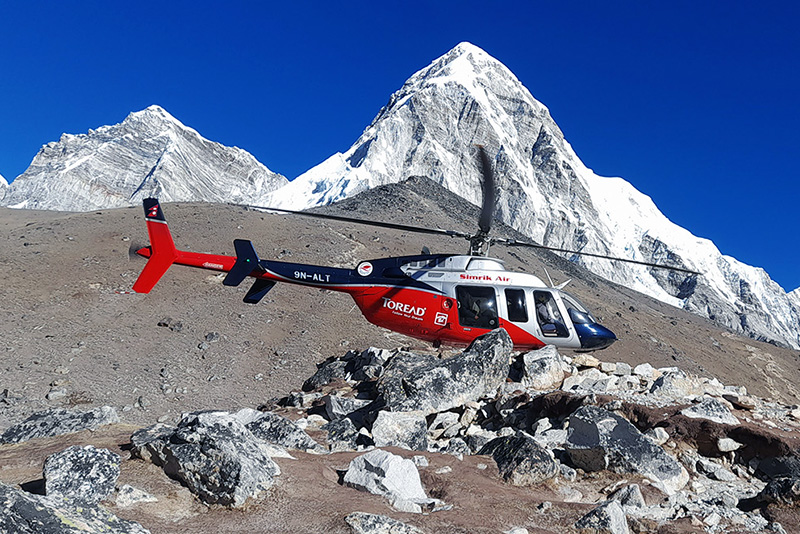
Everest Base Camp Helicopter Tour
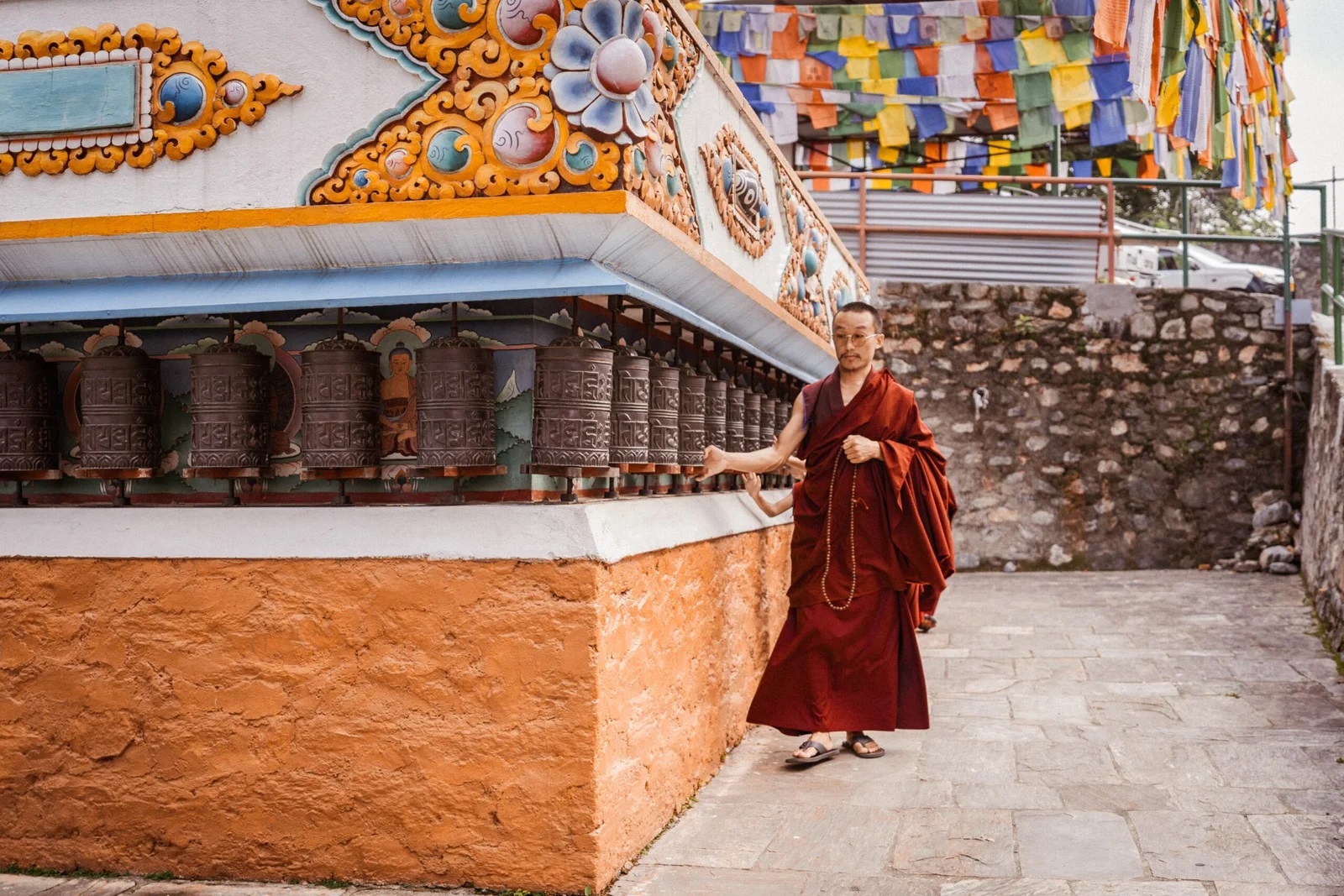
Monastery Stay Tour
